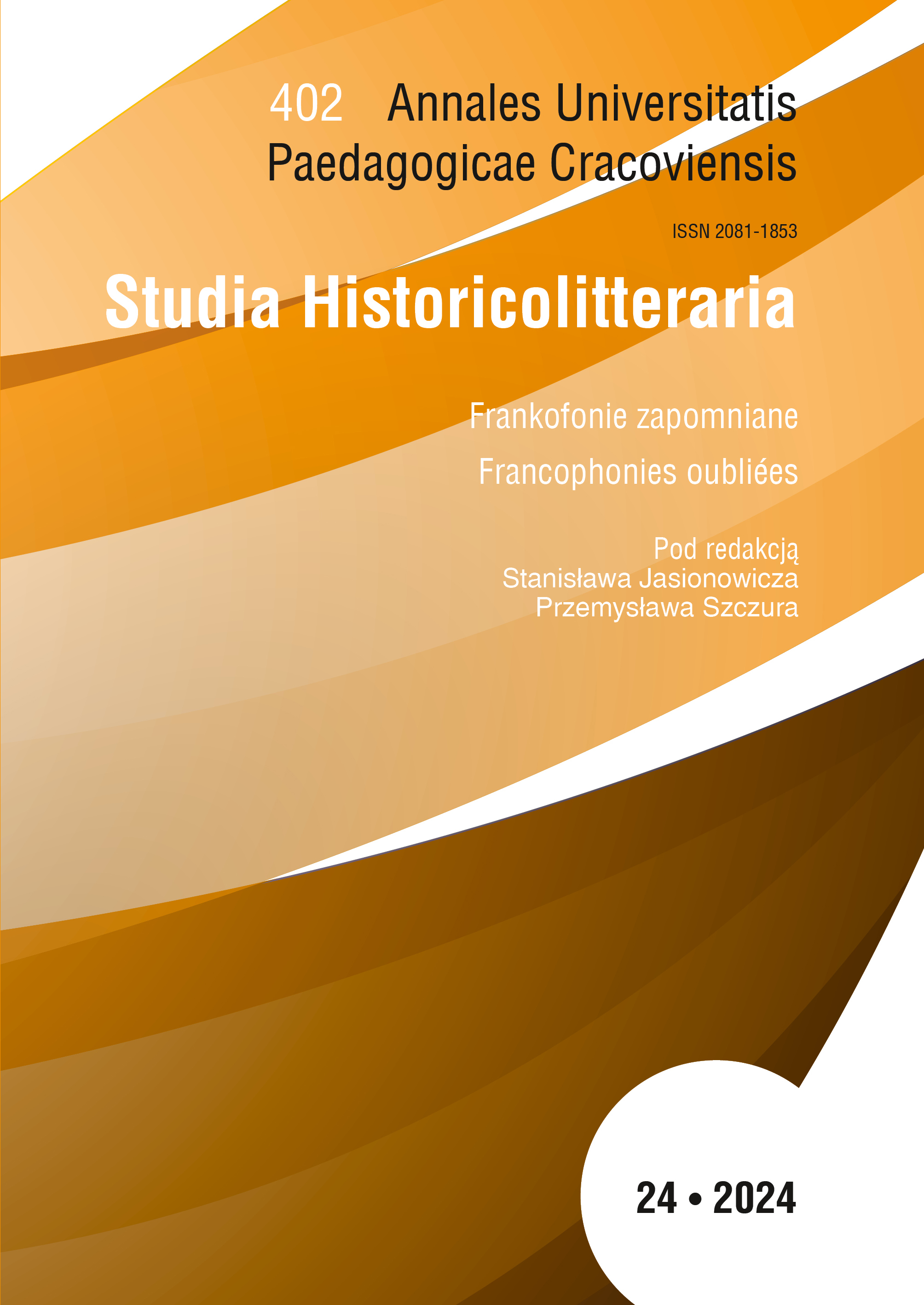At the feet of a chameleon. Two faces of nineteenth-century Paris in epistolography Eliza Krasińska, née Branicka
Main Article Content
Abstract
This article is an attempt to look at the Parisian correspondence of Eliza Branicka Krasińska, wife of the great poet Zygmunt Krasiński, as a story about the 19th century capital of France. The everyday life, political and social events described in Elżbieta Krasińska's letters show Paris as a city with two faces. Following the aristocrat, we reach the art studios of the most outstanding painters, watch performances in theaters and operas, and also taste the latest French literature. The prose of life is shown against the background of great history and internal changes taking place in France.
Downloads
Article Details

This work is licensed under a Creative Commons Attribution-NonCommercial-NoDerivatives 4.0 International License.
COPYRIGHT POLICY
The publisher of "Annales Universitatis Paedagogicae Cracoviensis.Studia Historicolitteraria" is authorised to use and distribute all the materials published in the journal on the basis of a non-exclusive licence agreement unlimited in time – previously concluded for an indefinite period of time each time with the author of a specific paper in the fields of exploitation specified in the agreement.
OPEN ACCESS POLICY
"Annales Universitatis Paedagogicae Cracoviensis.Studia Historicolitteraria” is an open access journal, and all its contents are available for free to users and/or their institutions on the basis of non-exclusive licenses under Creative Commons (CC BY CC-BY-4.0). Users can read, download, make copies, distribute, print, search, or to link to full text articles in this journal without the prior permission of the publisher or the author.This is consistent with the definition of open access BOAI (http://www.soros.org/openaccess).
References
Biografie romantycznych poetów, red. Z. Trojanowiczowa, J. Borowczyk, Poznań 2007.
Całek A., Nowa teoria listu, Kraków 2019.
Cysewski K., Teoretyczne i metodologiczne problemy badań nad epistolografią, „Pamiętnik Literacki” 1997, z. 1, s.95-110.
Hoesick F., Miłość w życiu Z. Krasińskiego, t. II, Warszawa 1899.
Lipiec M., Eliza z Branickich Krasińska. W nawias wzięta, „Teksty Drugie” 2000, nr 6, s. 186-193.
Łyszkowska A., Ojcostwo i macierzyństwo w świetle listów Zygmunta i Elizy Krasińskich, [w:] Życie prywatne Polaków w XIX wieku, t. VII: „Prywatne światy zamknięte w listach”, red. J. Kita, M. Korbut-Marciniak, Łódź-Olsztyn 2018.
Markuszewska A., Metafizyka integracji. Elizy z Branickich Krasińskiej poszukiwanie tożsamości, „Wiek XIX” 2010, t. XLV, s. 64-79.
Markuszewska A., Poetyckie światy romantyków. O młodzieńczej korespondencji Zygmunta Krasińskiego i Henryka Reeve’a, Toruń 2017.
Płaszczewska O., „Najlepiej jest być sobą”. Doświadczenia czytelnicze Elizy Krasińskiej, [w:] Wokół Krasińskiego, red. M. Sokalska, Kraków 2012, s. 217-242.
Skwarczyńska S., Teoria listu, na podstawie lwowskiego pierwodruku opracowali E. Feliksiak, M. Leś, Białystok 2006.
Sudolski Z., Kobiety w życiu Zygmunta Krasińskiego, Opinogóra 2006.
Sudolski Z., Polski list romantyczny, Kraków 1997.
Sudolski Z., W błękitnym kręgu. Opowieść o Elizie z Branickich Krasińskiej i jej środowisku, Pułtusk 2004.
Świadek epoki. Listy Elizy z Branickich Krasińskiej, t. 1-4, oprac. Z. Sudolski. Warszawa 1996.
